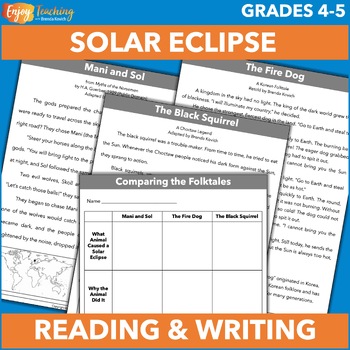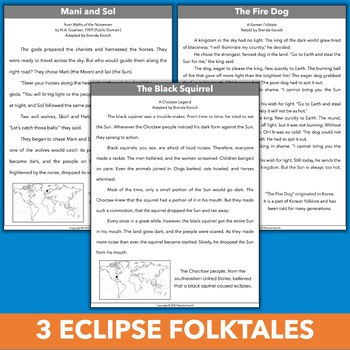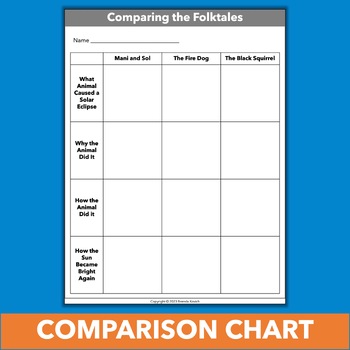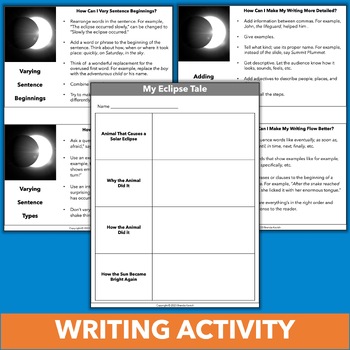Solar Eclipse ELA Activities – Folktale Reading & Narrative Writing Project 2024
- PDF
- Easel Activity
What educators are saying
Description
Informational text + literature + writing = fun solar eclipse ELA activities! Kids read science passages, compare folktales that explain the phenomenon, and do a narrative writing project.
Open the preview to take a closer look. You can use this interdisciplinary science and ELA project for the 2024 total solar eclipse – or anytime!
1. Explain the science behind the natural phenomenon with two one-page informational texts:
- Solar Eclipse
- Lunar Eclipse
2. Explore how people around the world explained eclipses by reading stories of mischievous animals:
- Mani and Sol (Norwegian)
- The Fire Dog (Korean)
- The Black Squirrel (Native American – Choctaw)
3. Find similarities in folktales from diverse cultures:
- What animal caused a solar eclipse (character)
- Why the animal did it (motivation)
- How the animal did it (action)
- How the Sun became bright again (resolution)
4. Use the same elements to plan and write original solar eclipse tales. A prompt and graphic organizer make planning easy.
5. Revise writing with eight cards. You can pick and choose the strategies – or use them all.
- Varying sentence beginnings, types, and lengths
- Choosing words for effect
- Using figurative language and active verbs
- Adding details
- Using transition terms
Two reference guides help kids select transition terms and write dialogue effectively.
Files include everything you need for the project:
- 2 informational texts on solar and lunar eclipses
- 3 folktales
- Comparison table
- Narrative writing planning sheet
- 8 revision cards
- Writing dialogue reference guide
- List of transition terms
Resources can be used in a variety of ways:
- Whole-class reading and writing instruction
- ELA activities for the 2024 solar eclipse
- Small group learning or tutoring
Two options are included: printable and digital.
- Print the PDF for pencil and paper activities.
- Or complete the pages online as Easel Activities.
Your students will love this project – and you will too!
- The tricksters in the folktales will engage your fourth and fifth grade readers. Then they’ll choose their own sneaky animals to write their own tales.
- They learn how folktales explain natural phenomena, like solar eclipses.
- Activities address the intent of your standards. For example, they’ll compare folktales to address CCSS RL.4.9 and RL.5.9. Additionally, they’ll write and improve narratives for CCSS W.4.3 and W.5.3.
Enjoy teaching!
Brenda Kovich






